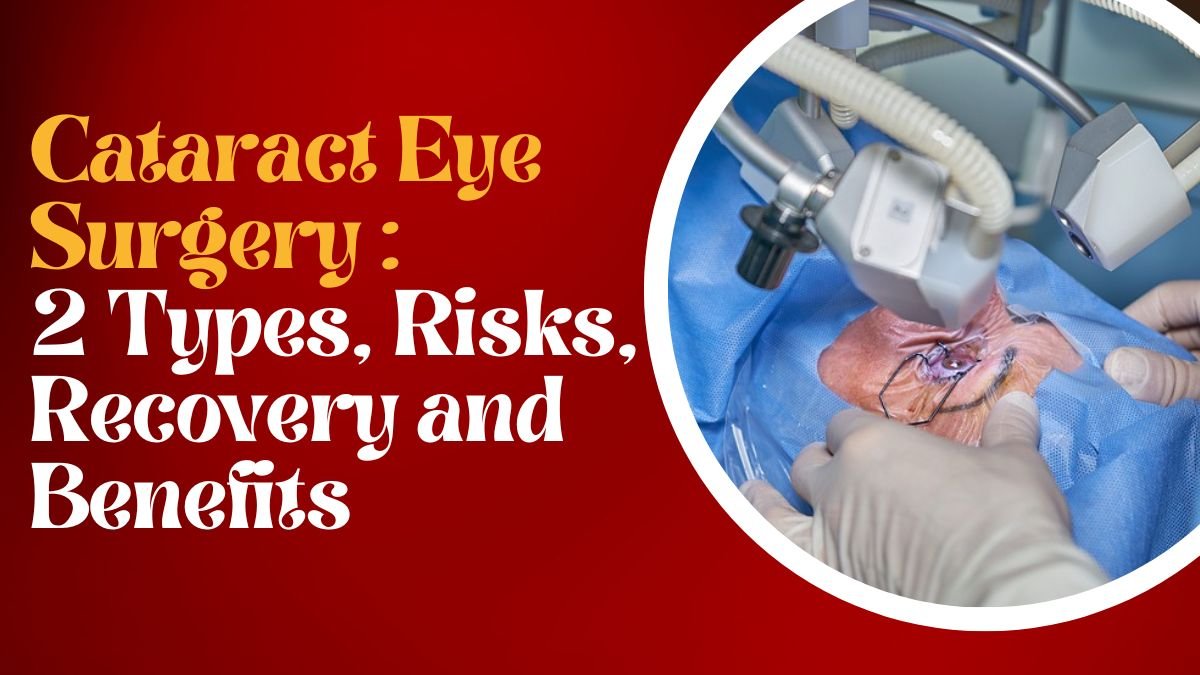Introduction to Cataract Eye Surgery
Cataracts, a common eye condition, can significantly impact one’s vision, particularly as they grow older. In this article, we’ll navigate the world of cataract eye surgery, from understanding the condition to the various surgical options and the recovery process.
What is a Cataract?
A cataract is a clouding of the eye’s natural lens. This cloudiness results in progressively blurred vision, making daily activities like reading, driving, and even recognizing faces increasingly difficult. Cataracts can develop in one or both eyes and are most commonly associated with the aging process.
Common Causes of Cataracts
Cataracts can have multiple causes, with aging being the most prevalent factor. However, genetics, smoking, excessive sun exposure, and certain medical conditions like diabetes can also increase the risk of cataract development.
Symptoms of Cataracts
The symptoms of cataracts are often subtle at first but can become more noticeable as the condition progresses. They include:
- Blurry vision
- Difficulty seeing at night
- Sensitivity to light
- Halos around lights
- Fading or yellowing of colors
Who Is at Risk for Cataracts?
Cataracts are more common among older individuals, typically affecting those over the age of 60. However, they can occur at a younger age, especially if there is a family history of cataracts or exposure to risk factors like smoking or UV radiation.
Diagnosis and Evaluation
If you suspect you have cataracts or are at risk, it’s essential to have your eyes examined by an ophthalmologist. Diagnosis involves a comprehensive eye exam, visual acuity tests, and other diagnostic procedures to determine the presence and severity of cataracts.
Different Types of Cataract Surgeries
Cataract eye surgery is a highly effective and common procedure. There are two primary methods:
- Traditional Cataract Eye Surgery: This procedure involves making a small incision in the eye, breaking up the cloudy lens, and replacing it with an artificial intraocular lens (IOL).
- Femtosecond Laser-Assisted Cataract Eye Surgery: This advanced approach uses laser technology for precise incisions and lens fragmentation, enhancing the accuracy of the surgery.
Preparing for Cataract Surgery
Before cataract Eye surgery, you will have consultations with your eye surgeon. They will discuss your medical history and any concerns you may have. You may be advised to stop taking certain medications before the surgery.
The Cataract Surgery Procedure
During the surgery, the cloudy natural lens is removed, and an IOL is implanted in its place. The procedure typically takes less than an hour, and it is almost painless due to the use of local anesthesia.
Recovery and Aftercare Cataract Eye Surgery
After cataract surgery, you may experience some mild discomfort, but it’s generally not painful. Your vision may be blurry initially, but it improves over time. You’ll be prescribed eye drops and given instructions for post-operative care.
Risks and Complications
While cataract surgery is considered safe, there are potential risks and complications, albeit rare. These may include infection, retinal detachment, increased intraocular pressure, and visual disturbances. Your surgeon will discuss these with you before the surgery.
Benefits of Cataract Surgery
Cataract surgery offers life-changing benefits, including:
- Improved vision
- Increased independence
- Enhanced quality of life
- Clearer and brighter vision
Alternative Treatments
For individuals who may not be suitable candidates for surgery, lifestyle changes and prescription eyeglasses can help manage cataracts. However, cataract surgery remains the most effective treatment for restoring clear vision.
Conclusion
Cataract eye surgery has revolutionized the way we treat this common age-related eye condition. With minimal risks and remarkable benefits, it offers individuals a chance to regain their clear and vibrant vision, ultimately improving their quality of life. If you’re considering cataract surgery, consult with an eye specialist to explore your options and embark on a journey towards better vision.
FAQ’S (Frequently Asked Question)
What is the typical age for cataract surgery?
Cataract surgery is most common in individuals over the age of 60, but it can be performed at any age if the cataracts are affecting your daily life.
Is cataract surgery painful?
Cataract surgery is not painful. Local anesthesia is used, and patients may feel slight pressure or discomfort, but there should be no pain.
Can cataracts return after surgery?
No, cataracts do not return after cataract surgery. The artificial lens that replaces the natural lens is permanent.
How long does the recovery process take?
Most patients experience improved vision within a few days to weeks after surgery. Full recovery varies from person to person.
Are there any dietary recommendations post-surgery?
While there are no specific dietary recommendations, maintaining a balanced diet rich in vitamins and antioxidants can support overall eye health.
Also Read : Rubbing Itchy Eyes: 4 Causes, Remedies, and Prevention

